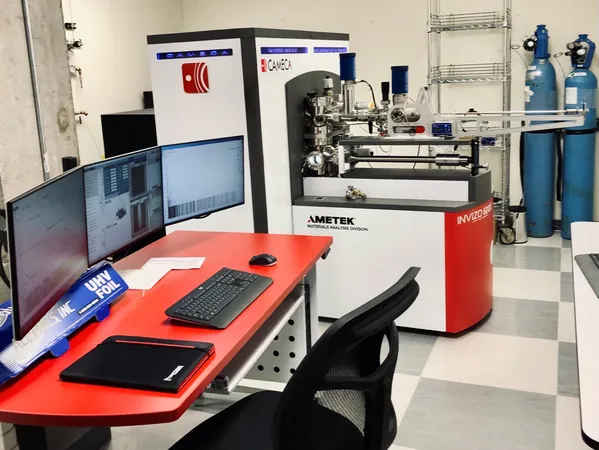
Breakthrough in Atom Probing: Polytechnique Montréal Unveils North America's Most Advanced Tomographic Atomic Probe
2024-11-14
Author: Amelia
Introduction
In a groundbreaking development for scientific research, Polytechnique Montréal has officially become the first facility in North America to house the most powerful tomographic atomic probe, known as the Invizo 6000. This state-of-the-art microscope offers researchers the remarkable ability to dissect materials atom by atom and create detailed 3D maps of their atomic architectures.
Significance of Invizo 6000
The potential applications of this advanced technology span a wide range of fields, from engineering innovative treatments for osteoporosis to enhancing the safety and durability of aerospace landing gear. Professor Oussama Moutanabbir from Polytechnique Montréal emphasized the significance of understanding atomic positioning: "We’re not just playing Lego with atoms. Our goal is to comprehend how materials perform and why they degrade over time."
How It Works
The Invizo 6000 performs its analysis by systematically extracting atoms from a sample, producing a three-dimensional visualization with unprecedented clarity. An integrated mass spectrometer provides insights not only into the type of atoms present but also their isotopic variations, showcasing sensitivity to even the smallest atoms like hydrogen and lithium.
Applications in Advanced Materials
This powerful tool opens doors to the design of next-generation advanced materials crucial for fields such as quantum information technologies, including nanoelectronics, optoelectronics, and advanced energy systems. It also lays the groundwork for pioneering semiconductor and quantum material development that is sensitive to atomic-level changes.
Biological Investigations
Moreover, the microscope enables deeper investigations into biological structures, allowing scientists to visualize intricate details within tissues such as bones. The acquisition of the probe required a seven-year effort involving collaboration among various universities, including Université de Montréal, École de technologie supérieure, McGill University, and Université de Sherbrooke, as they mobilized millions of dollars in funding.
Sample Preparation
To produce samples suitable for analysis, polycrystalline materials are meticulously shaped into needle-like structures that are then frozen to -230 degrees Celsius. An intense electric field is applied, and through a series of precise laser pulses, these atoms are propelled to the surface for examination. The speed at which an atom reaches the detector is crucial—it conveys vital information regarding the atom's mass and chemical identity while enabling researchers to pinpoint its original location on the sample.
Meteorite Analysis
In a remarkable demonstration of its capabilities, the probe has already yielded significant insights from a meteorite sample, revealing that it predates the formation of the solar system by over five billion years.
Future Applications
Looking to the future, researchers are optimistic about applying the probe's insights to enhance cancer detection technologies. As one colleague works on next-generation X-ray scanners, they recognize that atomic-level homogeneity is key to improving the performance of these detectors. Professor Mouttanabbir notes that a more uniform material means that fewer X-rays would be required to obtain the same diagnostic results.
Potential in Security Technologies
In exciting applications related to security measures, Professor Mouttanabbir speculates that, in the near future, advancements in this technology could lead to detectors so efficient that travelers at airports may no longer need to empty their bags during screening processes.
Conclusion
This revolutionary tool not only enhances the understanding of atomic composition but also stands to reshape multiple industries, propelling us toward innovations that could transform our everyday lives. The era of atomic-level discovery has arrived, raising the bar for what we thought was possible in material science and beyond!









 Brasil (PT)
Brasil (PT)
 Canada (EN)
Canada (EN)
 Chile (ES)
Chile (ES)
 España (ES)
España (ES)
 France (FR)
France (FR)
 Hong Kong (EN)
Hong Kong (EN)
 Italia (IT)
Italia (IT)
 日本 (JA)
日本 (JA)
 Magyarország (HU)
Magyarország (HU)
 Norge (NO)
Norge (NO)
 Polska (PL)
Polska (PL)
 Schweiz (DE)
Schweiz (DE)
 Singapore (EN)
Singapore (EN)
 Sverige (SV)
Sverige (SV)
 Suomi (FI)
Suomi (FI)
 Türkiye (TR)
Türkiye (TR)